Universally adored for its unparalleled beauty, Paris’ elegant lamp-lit boulevards have enticed wandering writers for centuries. Its ‘flâneurs’ (as coined by the writer Charles Baudelaire) would become literary legends: Oscar Wilde, TS Eliot, Ernest Hemingway, F Scott Fitzgerald, Gertrude Stein, George Orwell, James Baldwin, and countless others resided in the City of Light.
These bohemians found their voice in a city that sparks a particular kind of bookish magic – one you can still find in some of its most storied hotels. So put down your run-of-the-mill tourist guidebook and let’s take a Baudelairean stroll through history, and check in with some of the greats…
CHÂTEAU VOLTAIRE
Writer: François-Marie Arouet, aka Voltaire
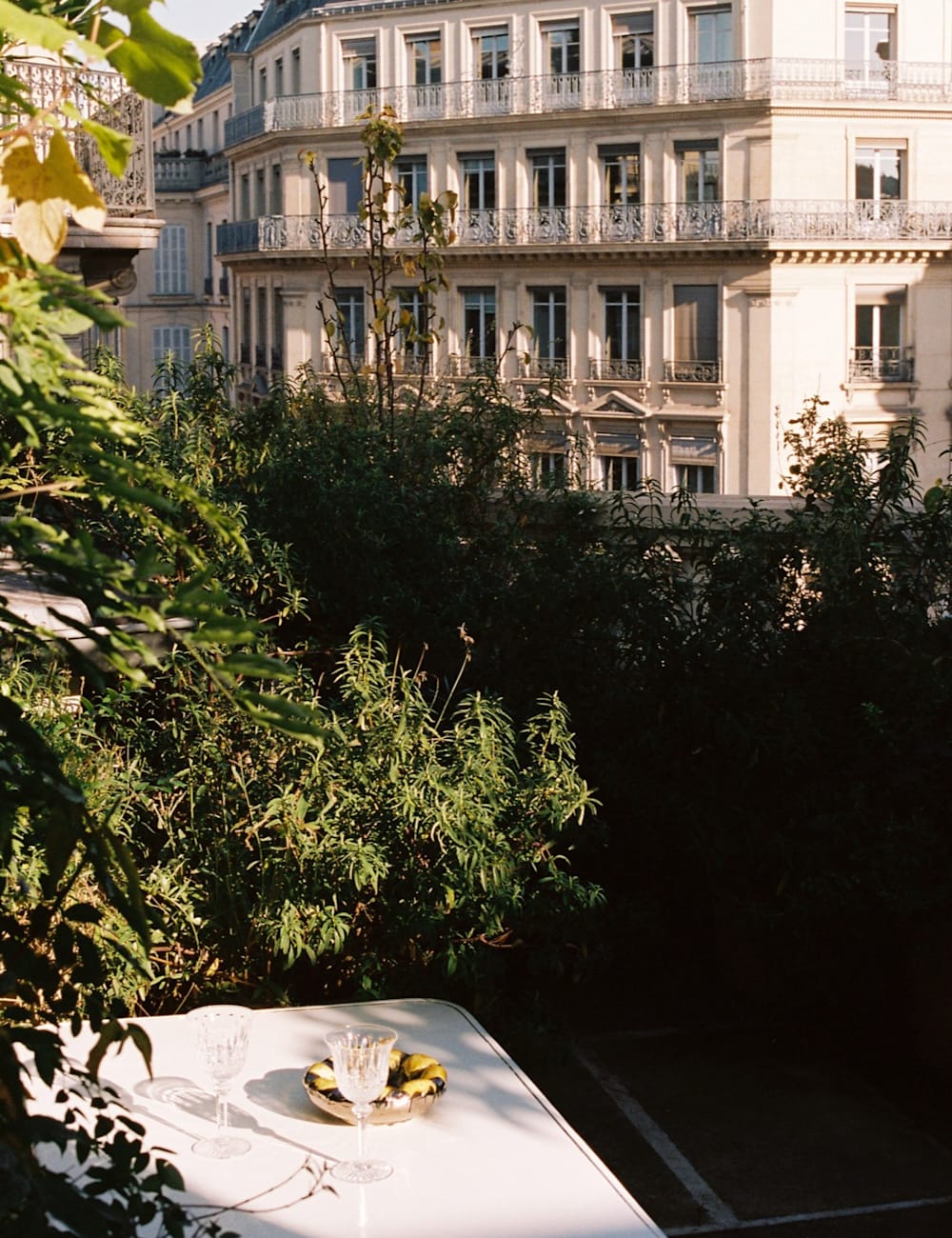
Situated in the heart of the 1st arrondissement, between the Louvre and Opera, Château Voltaire pays homage to one of France’s most prominent writers – Voltaire. Coincidentally, the Enlightenment figure spent his last days at 27 Quai de Voltaire (now the restaurant Le Voltaire) – a stone’s throw away from the hotel across the Seine.
Thierry Gillier’s hotel echoes the name of the building’s former residence; the headquarters of his fashion label Zadig & Voltaire. Named after Zadig, his favourite Voltaire novella, Gillier’s enduring love for his country’s history is reflected by the decor of the hotel, from the Rococo shell motifs, ornate Art Deco fittings, to the understated monochrome tiles of Brasserie Emil, designed by Franck Durand.
The hotel is a delectable conflation of grandiose sophistication and comfort, making you want to sip a zesty old fashioned at Le Bar La Coquille d’Or, before curling up on velvet chaise longue to read (Voltaire, naturellement).
MAISON BREGUET
Writer: Victor Hugo
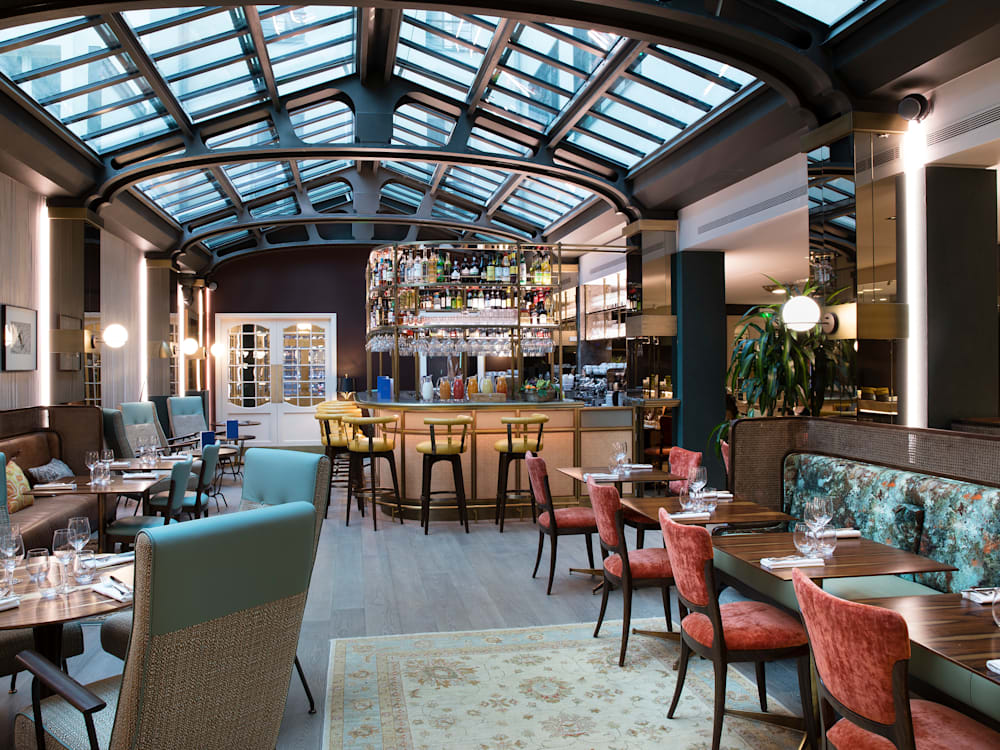
Inside a former washing machine factory, this boutique hotel is found on an unassuming street in the 11th arrondissement. With a chic bar and restaurant topped by high glass-ceilings, the industrial character of the former site is left in situ, albeit with the hallmarks of 21st century design flair.
Maison Breguet’s look is sleek and refined yet punctuated with 1970s retro accents and mid-century modern furnishings. The location is the real draw of this hotel, with lively Bastille only a few hundred metres away, as well as Place des Vosges – the charming historic square known for its distinctive vaulted arcades in Louis XIII-style.
Once the residence of the royal family, the square later became the home of Victor Hugo, the author known for The Hunchback of Notre Dame and Les Misérables. Visit the Maison de Victor Hugo to pry into his private life, snooping upon his most intimate possessions, from his stand-up writing desk to his secret letter exchanges with his mistress.
HÔTEL PROVIDENCE PARIS
Writer: Gustave Flaubert
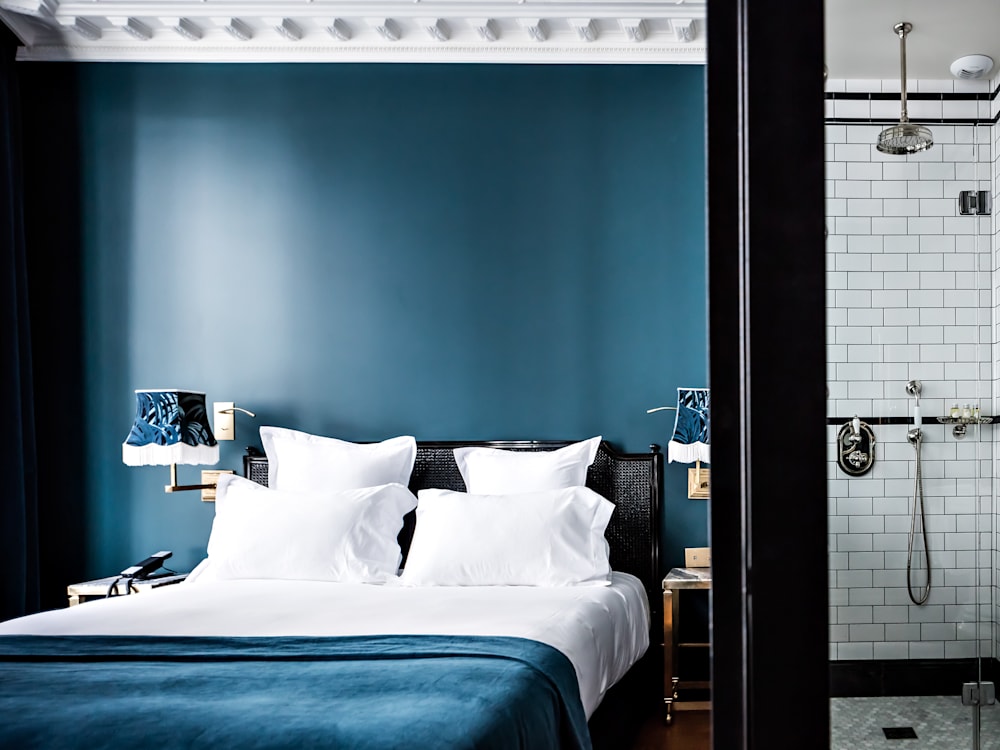
A short walk away from Canal Saint-Martin, Hôtel Providence is in a renovated Hausmannian townhouse, with rooms designed by Pierre Moussié (also known for the nearby bistro Chez Jeannette). In a bohemian chic style, each of the 18 rooms have been richly decorated, with vintage furnishings and curiosities.
The writer Gustave Flaubert once lived in this area, on the other side of République at 42 Boulevard du Temple. Known for his 1856 masterpiece Madame Bovary which scandalized his contemporaries, Flaubert is considered one of the most important literary figures to emerge from France.
A friend of Victor Hugo and writers like Émile Zola and George Sand, Flaubert was a well-loved yet irascible character. A notorious perfectionist, it famously took him weeks to devise the perfect sentence, explaining why his writing still electrifies readers today.
HÔTEL MADAME RÊVE
Writers: Colette and Jean Cocteau
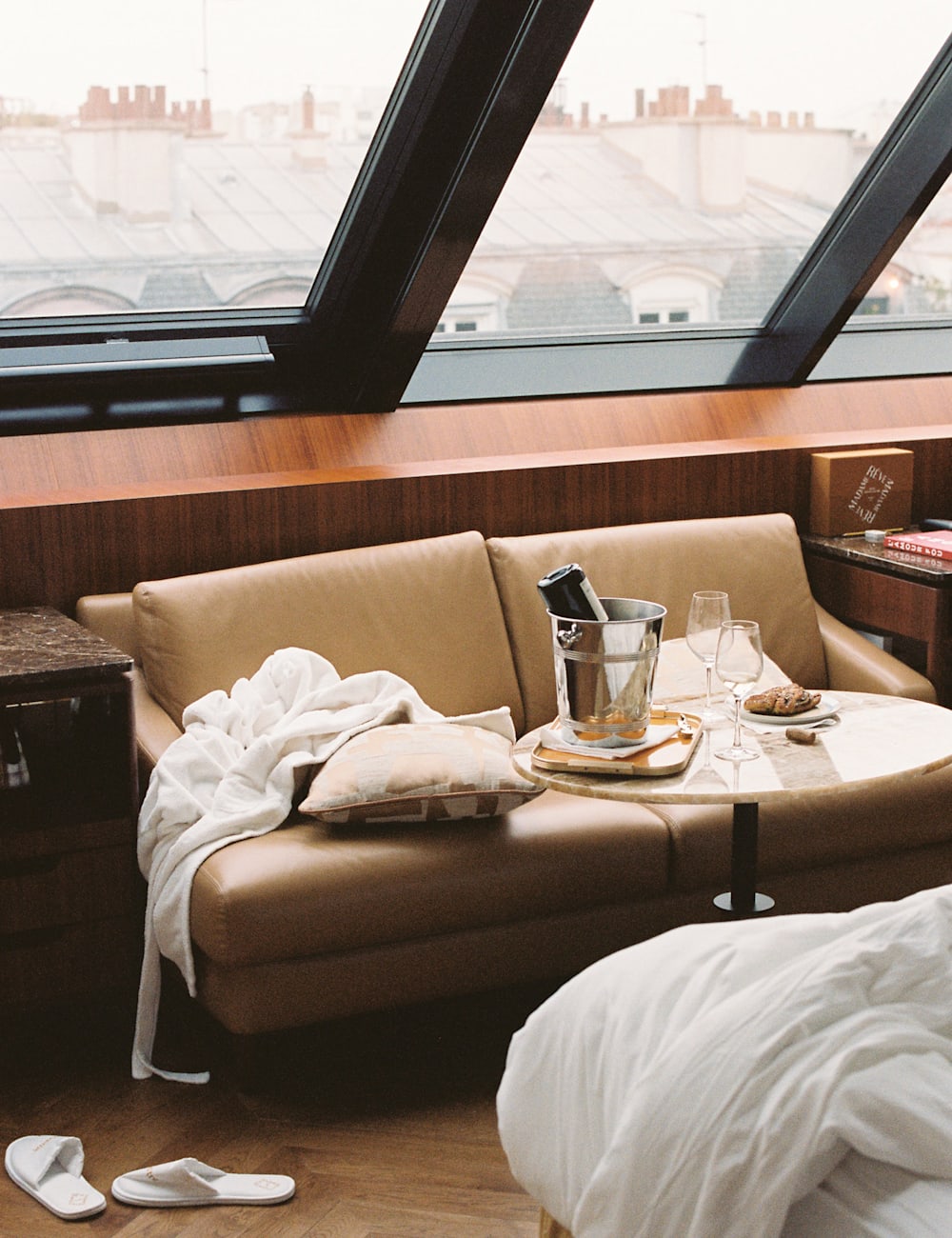
Hôtel Madame Rêve couldn’t be more centrally located, nor more photogenic. The palatial building has interiors that appear to be perpetually bathed in divine light, reflecting designer Andrée Putman’s observation that ‘if life has a colour, it’s golden brown.’
Situated in the historic 1st arrondissement, the hotel is in the renovated 1888 Louvre Post Office Building and around the corner from residence of Sidonie-Gabrielle Colette, known by her pen name ‘Colette’.
Colette moved here, aged 20, in 1893, and took the Belle Époque literary salons by storm with her sharp wit and sexually frank Claudine novels, written in collaboration with her husband Henry Gauthier-Villars (also known as ‘Willy’). Recognisable for her androgynous fashion sense and heavy kohl eye make-up, Colette could be seen walking around the Palais Royal neighbourhood, as she lived at No.9 Rue Beaujolais.
LA RÉSERVE PARIS
Writer: Marcel Proust
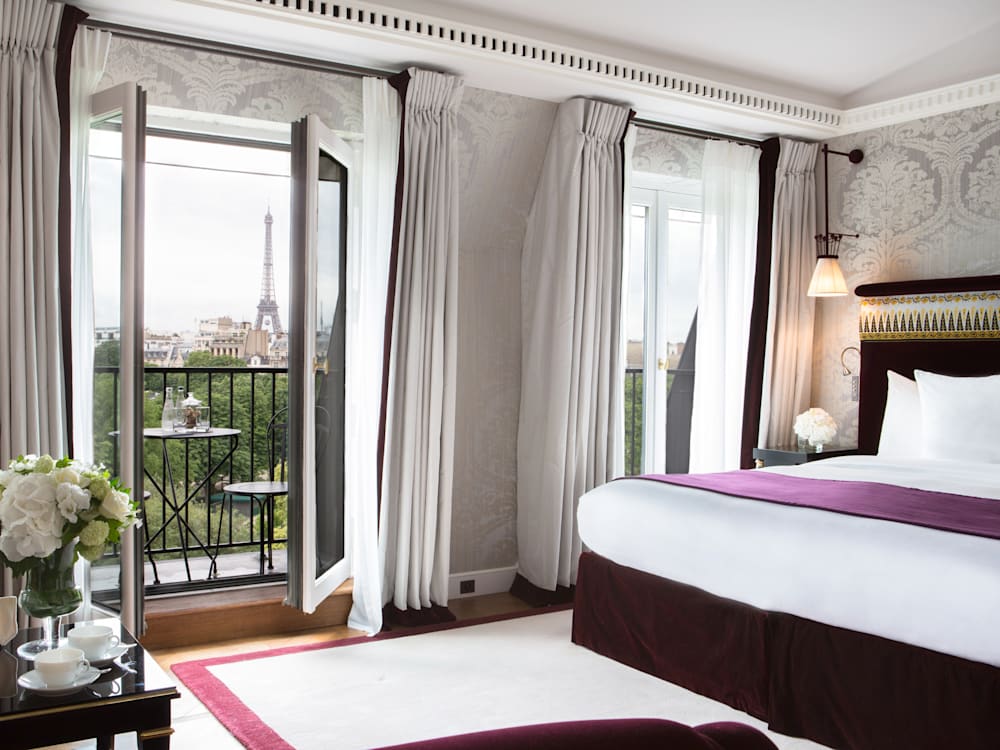
In the heart of the elegant 8th arrondissement – not far from the Champs-Élysées, Grand Palais, and La Concorde – La Réserve is a short distance away from Marcel Proust’s family home, at 9 Boulevard Malesherbes (next to Madeleine Church).
The luxury hotel, which opened in 2015, is in the former mansion of Napoleon’s stepbrother, the Duc of Morny. Paying stylistic homage to its history, the modern renovation is in Jacques Garcia’s signature style – lavish and leaning towards voluptuous extravagance.
From the suite balconies guests can look across the rooftops of the Grand Palais and spot the Eiffel Tower in the distance. Proust lived in the neighbourhood at the end of the 19th century, before moving to Cabourg, Normandy, where he wrote the ‘longest novel ever written’ In Search of Lost Time.
L’HÔTEL
Writer: Oscar Wilde
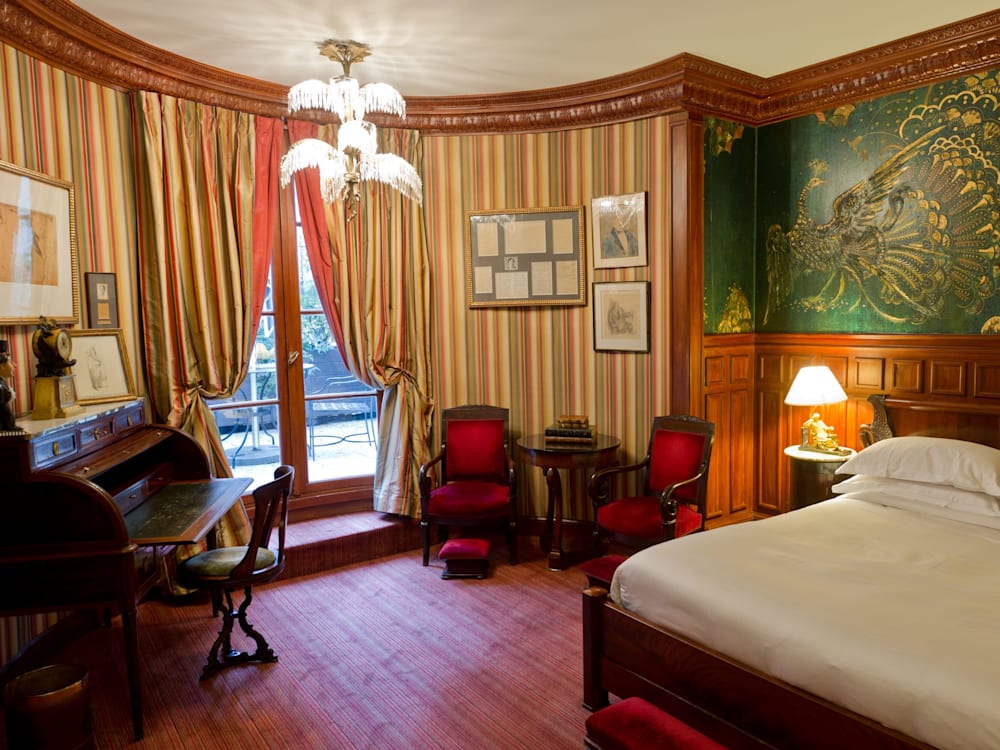
Renowned for being the home (and death place) of the Irish writer Oscar Wilde, L’Hôtel offers a unique glimpse into the history of St-Germain, in the heart of the Latin Quarter. Wilde rented his own apartment here which can be booked today and is known as the ‘Oscar Wilde Suite’.
A sumptuous feast for the eyes, the suite echoes the rest of the hotel’s interior design, bedecked with rich textures, fabrics, and bold colours. The author of The Picture of Dorian Gray and The Importance of Being Earnest, Wilde relocated to Paris after he had been publicly shamed in Britain for his homosexuality.
Paris became a place of refuge and liberation for the persecuted playwright, though unfortunately – due to spending time in solitary confinement while in prison – his health got the better of him. He spent his last days confined in L’Hôtel, before his death in November 1900. ‘My wallpaper and I are fighting a duel to the death. One or the other of us has to go’ was one of his final written sentences.
HOTEL MONTE CRISTO
Writer: Alexandre Dumas
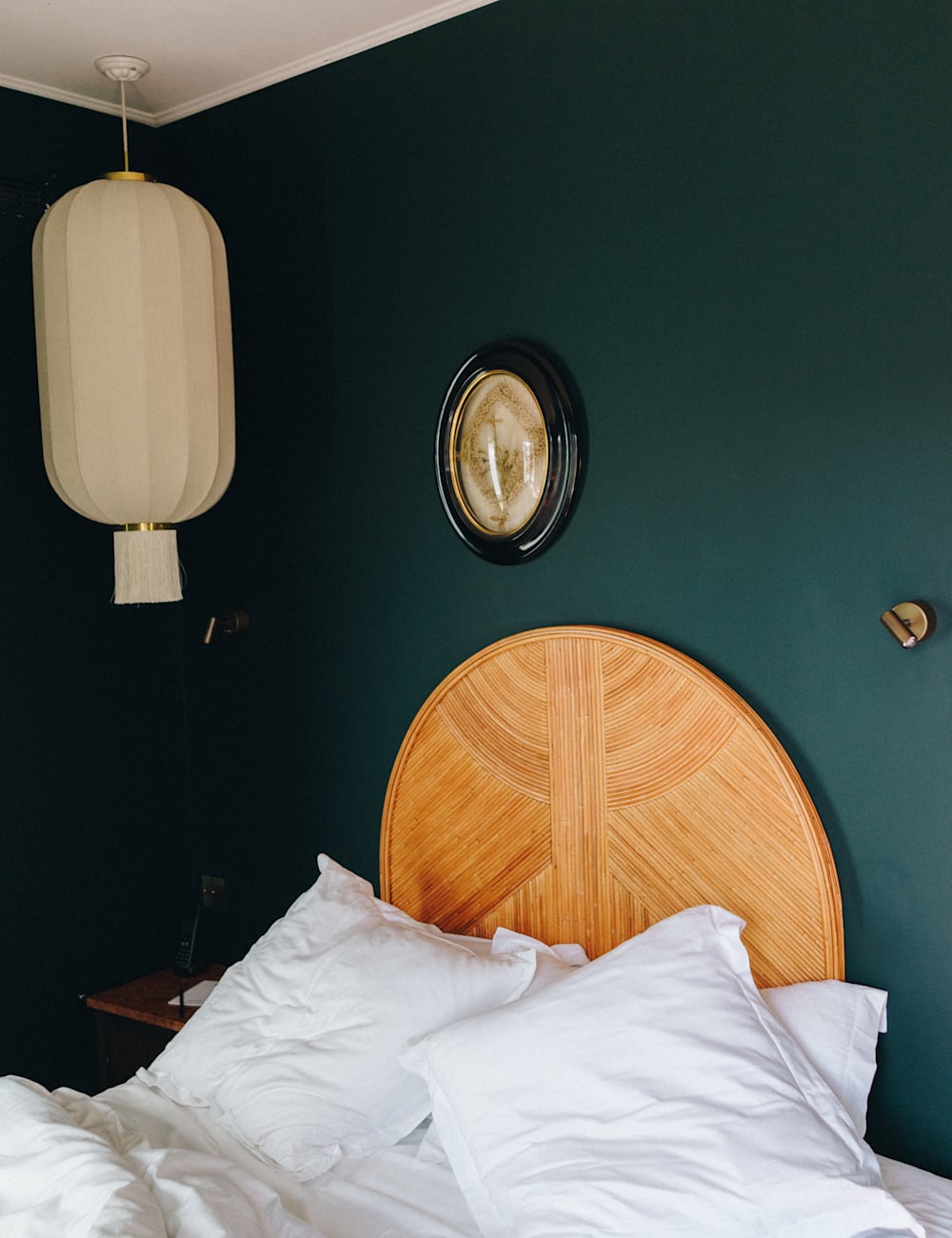
Aesthetically inspired by Alexandre Dumas’ tale of revenge and retribution, The Count of Monte Cristo, the eponymously named hotel takes on the design characteristics of an exotic adventure story.
Located on a quiet street in the 5th arrondissement, the surrounding neighbourhood feels refreshingly tranquil in contrast to the congested touristy areas of Rive Droit. Upon entry, hotel visitors are greeted by a glass vitrine of stuffed rare birds and shelves of heavy leather-bound books, as well as a vintage photograph of the author himself – as if he is overseeing the management of the hotel himself (with an air of mischief). As the name suggests, the Rum Bar serves bespoke rum-based cocktails with a twist of tropical flavours (order the banana Old Fashioned).
A stay at Hotel Monte Cristo offers a unique dive into literary history, one that feels divorced from the typical Parisian experience, yet still maintains an air of sophisticated refinement. A visit to Shakespeare and Company, the much-loved bookstore opened by Sylvia Plath, is essential if wandering around the area.
LA BELLE JULIETTE
Writer: Edith Wharton
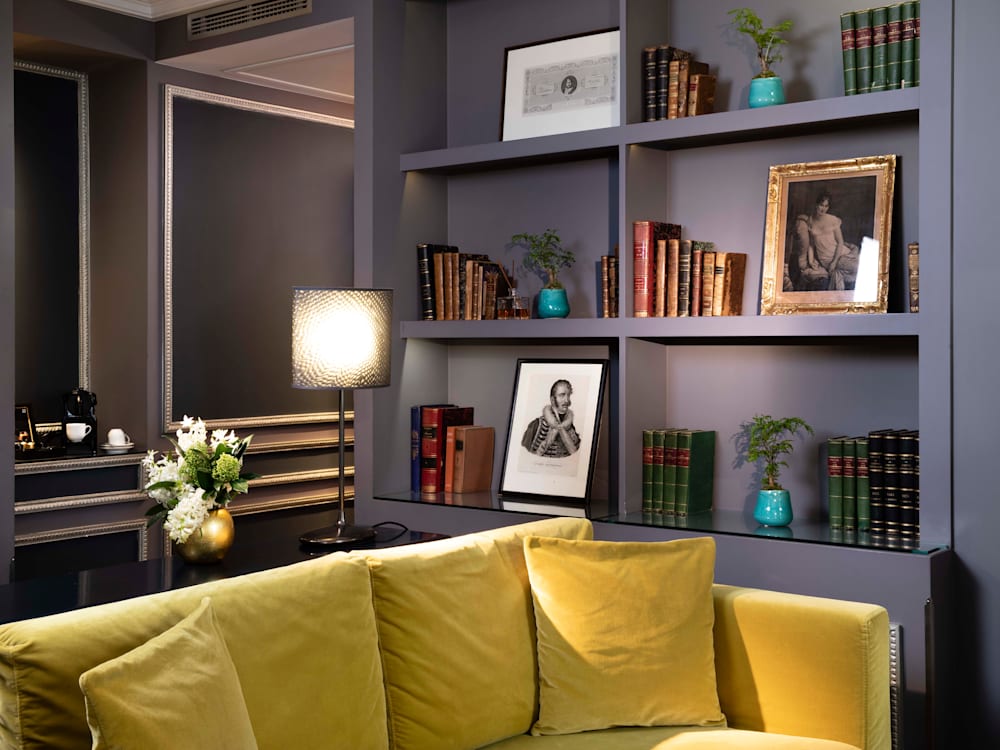
In the heart of the 6th arrondissement, La Belle Juliette is named after the 18th-century socialite, Juliette Récamier whose illustrious literary salon attracted the French elite. In homage to Juliette, the 34-room hotel has been designed by Anne Gelbard in a delightfully feminine style, echoing some of the colour palettes and design forms of the Neoclassical era.
Around the corner from Saint Sulpice and Odéon, the hotel is also in the neighbourhood that attracted the American expatriate, Edith Wharton, who lived on 58 Rue de Varenne – now an annex of the Prime Minister’s residence.
Enraptured by the beauty of her surroundings, Wharton wrote in 1907: ‘I am sunk in the usual demoralizing happiness which this atmosphere produces in me. The tranquil majesty of the architectural lines, the wonderful blurred winter lights, the long lines of lamps garlanding the avenues and the quays “je l’ai dans mon sang!” (“I have it in my blood!”)’.
SAINT JAMES PARIS
Writer: Honoré de Balzac
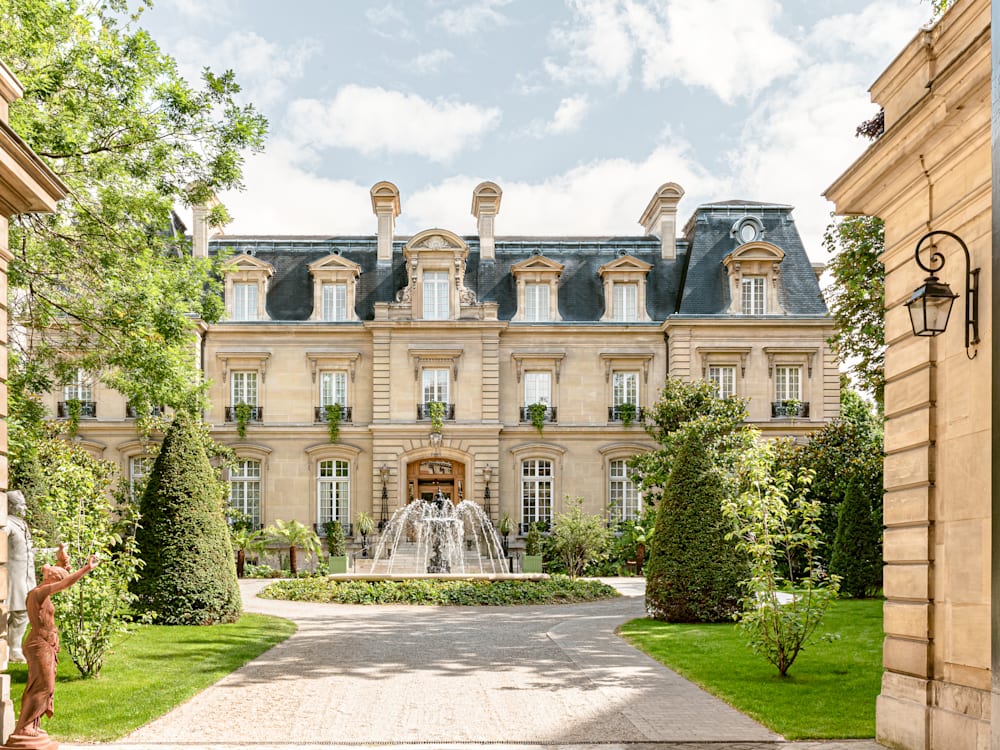
The remarkable château-turned-hotel, Saint James, is found in the heart of the leafy 16th arrondissement. Designed from top to bottom by the Parisian architect, Laura Gonzalez, the hotel has been refurbished to reflect her signature maximalist style: a seamless blend of richly textured fabrics and prints.
The former home of the 19th-century president Louis Adolphe Thiers, the Neoclassical building is now a 22-room luxury hotel and spa, including a Michelin-star Bellefeuille restaurant run by Julien Dumas. An important literary figure who used to haunt the area was Honoré de Balzac, the author of La Comédie humaine.
Without leaving the 16th, you can visit his former home, Maison de Balzac, which has kept intact his original furnishings and materials. For the art lovers, another cultural must-see of the neighbourhood is the Frank Gehry designed Louis Vuitton Foundation before an evening stroll in Bois de Boulogne.
Get full chapter and verse with our complete collection of Paris hotels
Lydia Figes is a writer, editor and culture addict who lives between London and Paris. She has written for the likes of The Guardian, Dazed, AnOther, Elle and more, and is now writing her first book. When she’s not writing she’s probably reading, visiting an art gallery, watching a Mubi film, travelling, laughing at a meme, or drinking a filthy martini with her mates.



